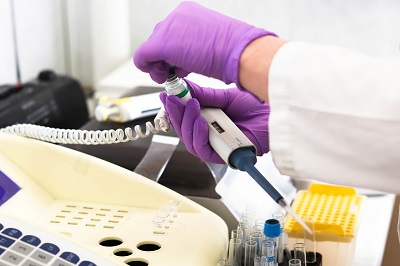How to apply for Class I medical device registration with the Australian TGA?
Release time:2024-09-23 11:27:47
The author:
source:
Class I medical devices are low-risk devices, such as bandages or simple non-invasive devices.
To apply for Class I medical device registration with the Australian Therapeutic Goods Administration (TGA), you must follow a step-by-step process. Here's a detailed guide on how to apply:
Step-by-Step Process for Class I Medical Device Registration
Step 1: Confirm the Device Classification
- Determine if Your Device is Class I:
- Class I medical devices are low-risk devices, such as bandages or simple non-invasive devices.
- Use the Australian Therapeutic Goods (Medical Devices) Regulations 2002, particularly Schedule 2, to verify that your device falls under the Class I category.
Step 2: Appoint an Australian Sponsor (if applicable)
- If the manufacturer is outside Australia, you must appoint an Australian sponsor. The sponsor will:
- Be legally responsible for the device in Australia.
- Handle communication with the TGA and ensure compliance with regulatory requirements.
- The sponsor must have an Australian address and will submit the application on behalf of the manufacturer.
Step 3: Prepare Technical Documentation
You need to have all the required documentation ready before submitting your application. Although the TGA does not review this documentation during the registration process, it must be available for inspection if requested in a post-market audit.
- Documentation Required:
- Declaration of Conformity: A self-declaration that the device complies with the Essential Principles of safety and performance.
- Risk Management Plan: Documentation showing that risks associated with the device have been identified and mitigated (aligned with ISO 14971).
- Device Description: A detailed description of the device, including its intended use, design, materials, and manufacturing process.
- Labeling and Instructions for Use (IFU): Information provided to users on the proper use and any warnings related to the device.
Step 4: Obtain a TGA Client ID
- If the manufacturer or sponsor does not already have a TGA Client ID, one must be requested through the TGA Business Services (TBS) portal.
- A Client ID is necessary to submit applications to the TGA.
Step 5: Submit the Application through the TGA Business Services (TBS) Portal
Register on the TBS Portal:
- Log in to the TGA Business Services portal, or create a new account if you don’t already have one.
Application Submission:
- Select Medical Device Application: In the portal, choose the option to apply for inclusion of a Class I medical device in the Australian Register of Therapeutic Goods (ARTG).
- Complete the Online Form:
- Provide details about the device (name, description, and classification).
- Submit the Declaration of Conformity.
- Enter the details of the manufacturer and sponsor.
- Review the Information: Ensure that all the details are accurate before submitting the application.
Application Fee:
- For non-sterile, non-measuring Class I devices, no application fee is required.
Step 6: Receive ARTG Number
- Once the application is submitted and processed, the TGA will issue an ARTG number for the device.
- Time Frame: For Class I devices, the processing time is typically a few days to a few weeks, as the TGA does not conduct an in-depth review at the time of application.
- After receiving the ARTG number, the device is legally registered and can be supplied in Australia.
Step 7: Post-Market Obligations
- Post-Market Surveillance: After registration, you must monitor the device's safety and performance through post-market surveillance.
- Adverse Event Reporting: If any adverse events occur, they must be reported to the TGA.
- Maintain Technical Documentation: Keep your technical documentation up to date and available for inspection in case of a TGA audit.
Step 8: Pay Annual Charges
- Annual ARTG Listing Fee: There is an annual charge of around AUD 1,080 to maintain the ARTG listing for your Class I device. Failure to pay the fee may result in cancellation of the registration.
Summary of the Application Process
- Verify device classification as Class I.
- Appoint an Australian sponsor if the manufacturer is outside Australia.
- Prepare technical documentation, including the Declaration of Conformity, risk assessments, and labeling.
- Register for a TGA Client ID (if needed).
- Submit the application through the TGA Business Services (TBS) portal.
- Receive an ARTG number, confirming your device is registered.
- Maintain post-market compliance and pay annual charges to keep the device registered.

Contact Us:
Whatsapp or Wechat:+86 15816864648;email address:hito.lin@grzan.cn
.png)
.jpg)
.png)

.png)